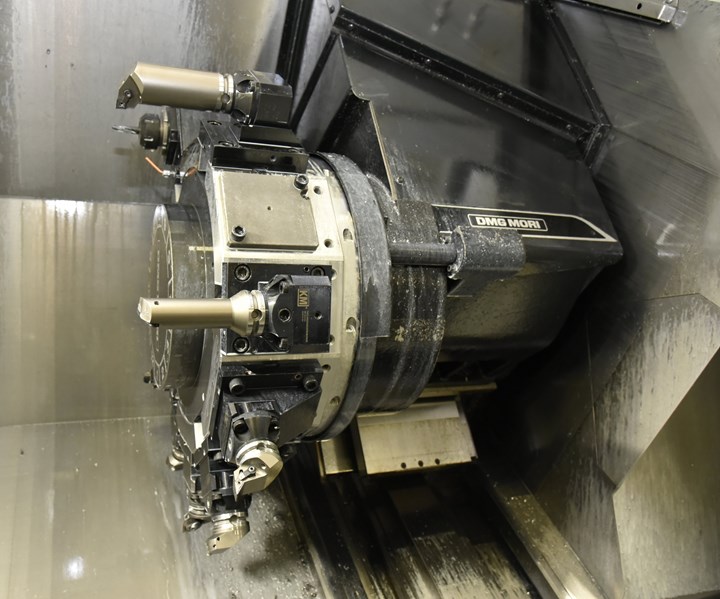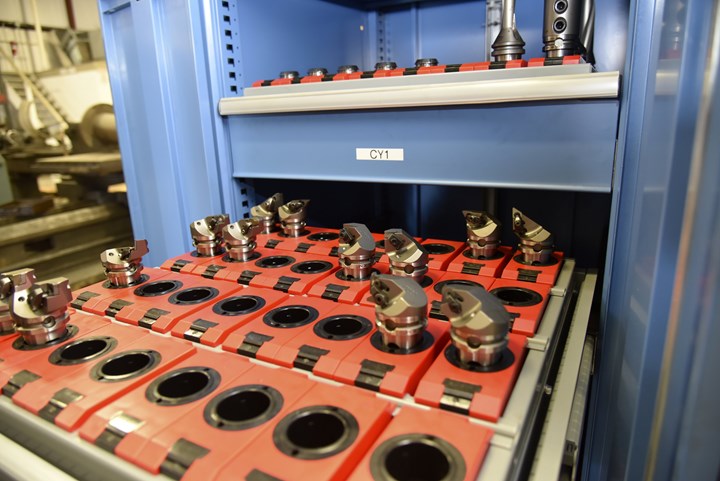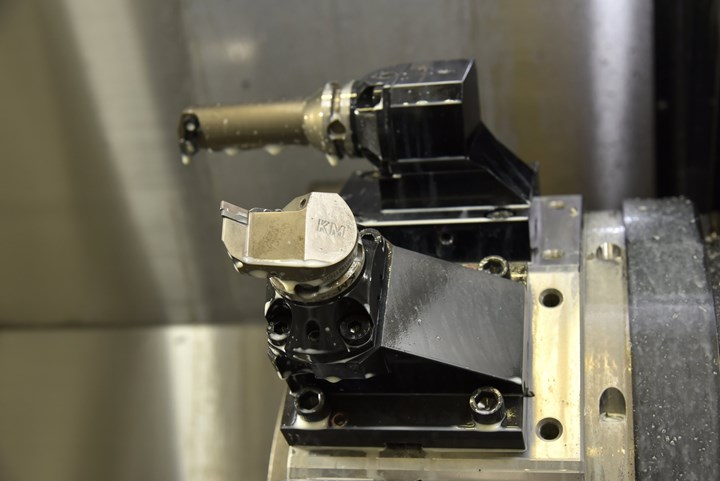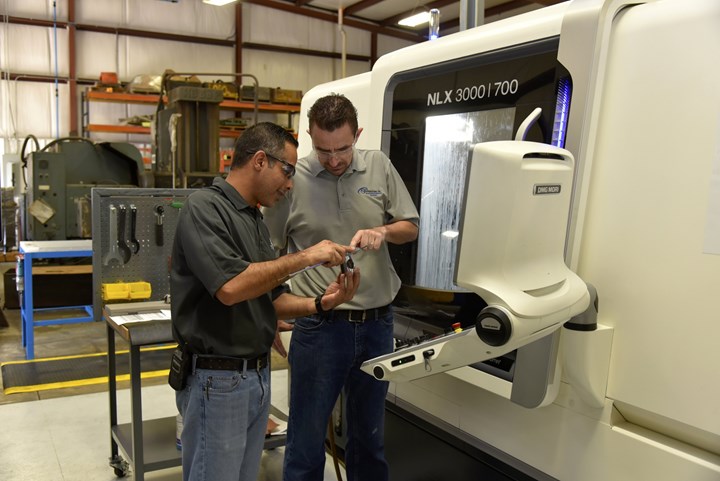Tooling System Reduces Setup Time So Shop Stays Competitive
Turret adapted clamping units and quick-change tooling systems have helped a company use its new turning centers more effectively, so it can win new business in a competitive environment.
In a competitive business environment, manufacturers need to do whatever they can to give themselves an advantage. For machine shops, investing in the best technology available is one way to gain the leg up needed to win jobs. This is how Anthony Machine Inc. of San Antonio, Texas, operates its business. The company also maintains strong relationships with its suppliers to ensure that it is getting the most out of the latest technology. “We’re always competing against smaller, lower-cost shops and in order to continue winning new business in this environment, we have to adopt the latest in advanced tooling and machine tool technology,” says Anthony’s operations manager Mohsen Saleh. “This is what’s given us the edge, and Kennametal is a big part of it.”

In order to stay ahead of its competition, Anthony Machine purchased its first Y-axis, live tool lathes—both NLX 3000 1250 universal turning centers from DMG MORI. At the recommendation of its Kennametal sales engineer, the company equipped its new machines with turret adapted clamping units and KM quick-change tooling.
Anthony Machine Inc. has been providing precision machining services to industries including oil and gas, mining, transportation and power generation since 1946. With all that experience, there is little this job shop cannot handle. However, after the company purchased a pair of NLX 3000 1250 universal turning centers from CNC machine builder DMG MORI—the shop’s first Y-axis, live tool lathes—the company’s manufacturing team was challenged with making the most of that new investment.
Kennametal senior sales engineer, Mark Davis, was there to help, just as he has been for the past decade. He recommended that the company equip the new machines with turret adapted clamping units (TACU) and KM quick-change toolholders to help reduce setup time and maximize the new machines’ potential.
Kennametal’s TACU system is designed to optimize machine use by increasing repeatability and reducing setup times. The TACU system supports KM quick-change tooling sizes 32, 40, 50 and 63 and is available for a range of tool and machine types. “We offer blocks for both static and driven tools and can tool up lathes from Okuma, Haas, Mazak, Doosan and of course DMG Mori—pretty much all of the major machine tool builders, with more coming online all the time,” Mr. Davis says. “This makes it both easy and cost-effective for our customers to equip more than 80 models of CNC turning centers with a fast, flexible and accurate quick-change toolholding system.”

Anthony Machine had been using KM quick-change tooling elsewhere in its shop, so the decision to implement it on its new turning centers was easy.
According to Manufacturing Technologist Daniel Goller at Anthony Machine, the decision to adopt the TACU and KM systems for the new machines was an easy one, especially because the company was already familiar with the KM quick-change tooling from having used it elsewhere in the shop for years. “Over the years, we’ve built a number of KM-equipped custom toolholders for deep boring and other machining operations on our CNC lathes and machining centers, and we use Kennametal on several of the shop’s manual turret lathes to overcome limitations with available tool positions,” he says. “On more than one occasion, we’ve earned new business because KM was able to achieve tolerances and surface finishes that others couldn’t do with conventional tooling.”

According to Anthony’s operations manager, the KM-equipped TACU units are faster and more accurate than the wedge and screw-style blocks that are standard on most machines.
Mr. Saleh agrees. “The differences are striking. Compared with the traditional wedge and screw-style blocks that come standard on most machines, the KM-equipped TACU units are both faster and more accurate. We routinely hold tolerances of 0.0005 inch (0.013 mm), and I’m told that part size doesn’t change from one clamping to the next,” he says. “The turret’s less crowded, everything’s easier to get at, and you don’t have the chatter and deflection that you often find with your typical straight shank tools and set-screw type boring bar holders.”
“Anthony’s experience with TACU is what we’ve come to expect from KM,” Mr. Davis says. “Considering the breadth of the platform, its accuracy, and especially its flexibility, it has quickly become the de facto industry standard in quick-change tooling.”

Operations Manager Mohsen Saleh (pictured with CNC Machinist Setter Mark Garland) says the new tooling system routinely holds tolerances of 0.0005" (0.013 mm).
Mr. Saleh summarizes Anthony’s recent success with a bit of company perspective. “We bought our first CNC machine in 1986. At that time, we were using a well-known competitive brand, and then Kennametal came knocking,” he says. “What first struck us was their service-oriented attitude. They’ve always been willing to come in and work with us on applications, which together with the quality of their products is why they’ve since become our preferred tooling supplier.”
After seeing the benefits of using the KM and TACU systems on its new Y-axis, live tool lathes, Anthony Machine is planning to expand its use of quick-change tooling in other parts of its shop.
Related Content
4 Strategies for Managing Chip Control
Having strategies in place for managing chips is an important part of protecting the production process, from tool life to product quality.
Read MoreMaking Micro Threads
Production of micro threads can be challenging, but using the most suitable tools for a given application can simplify the task.
Read MoreBoring Head Enables Sculpture Hardware to Be Machined on a Lathe
When small job shop Ansonia Manufacturing took on a tricky hardware component job for a “live” glass art sculpture, it realized a boring head would be needed to machine the part complete on its live-tool lathe.
Read MoreCNC Turning Tips for HRSA Materials
Rough-turning, heat-resistant superalloys can be challenging. However, new carbide insert technology provides the capability to perform high-speed, high-feed roughing in a single pass.
Read MoreRead Next
5 Aspects of PMTS I Appreciate
The three-day edition of the 2025 Precision Machining Technology Show kicks off at the start of April. I’ll be there, and here are some reasons why.
Read MoreA Tooling Workshop Worth a Visit
Marubeni Citizen-Cincom’s tooling and accessory workshop offers a chance to learn more about ancillary devices that can boost machining efficiency and capability.
Read MoreDo You Have Single Points of Failure?
Plans need to be in place before a catastrophic event occurs.
Read More









.png;maxWidth=300;quality=90)












